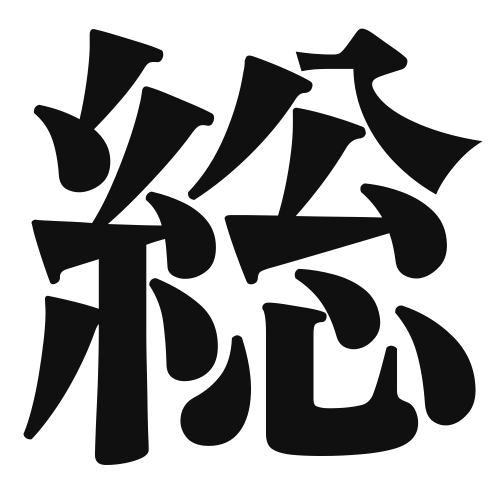1. Overview of Meaning
The kanji “総” (sō) means “total,” “overall,” or “general.” It is often used to indicate the entirety of something or to summarize various elements into a whole.
2. Formation and Radical
Formation of the Kanji: The kanji “総” is a compound character, which means it is formed by combining different elements. It consists of the radical “氵” (water) and the character “総” (to gather), symbolizing the idea of gathering or collecting various parts into a whole.
Radical: The radical of “総” is “氵,” which is related to water and often signifies fluidity or gathering.
3. Examples of Usage
Common Words and Phrases: Some frequently used words that include “総” are:
- 総合 (sōgō) – integration, synthesis
- 総理 (sōri) – prime minister
- 総額 (sōgaku) – total amount
Example Sentences in Daily Conversation:
- このプロジェクトの総合的な評価は良好です。 (The overall evaluation of this project is good.)
- 総理大臣は新しい政策を発表しました。 (The prime minister announced a new policy.)
4. Synonyms and Antonyms
Similar Kanji: A kanji with a similar meaning is “合” (gō), which means “to combine” or “to fit.” While “総” refers to the totality or overall aspect, “合” focuses more on the act of combining elements.
Opposite Kanji: An antonym of “総” is “個” (ko), which means “individual” or “single.” This contrasts with the idea of totality represented by “総.”
5. Cultural and Historical Background
Relation to Japanese Culture: The concept of “総” is significant in Japanese culture, where collective harmony and unity are valued. It reflects the importance of seeing the bigger picture in various aspects of life.
Proverbs and Idioms: One common saying is “総力を挙げて” (sōryoku o agete), which means “to put in all one’s efforts” or “to work together as a whole.” This emphasizes the idea of collective effort and unity.
